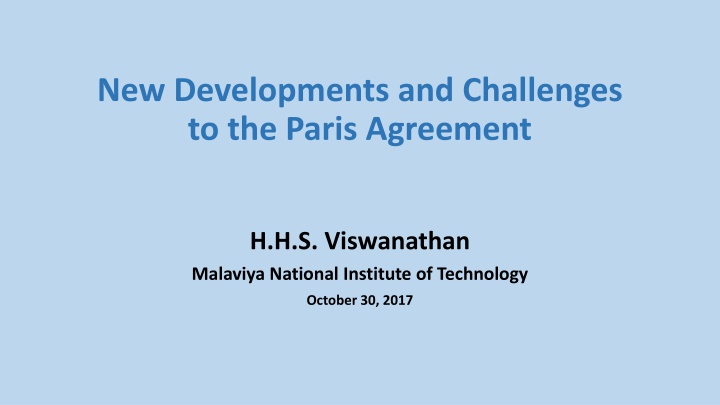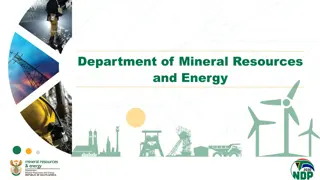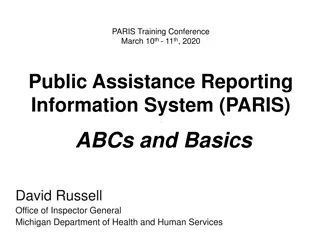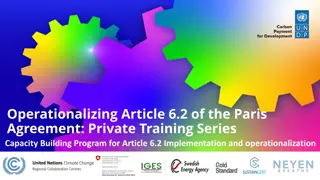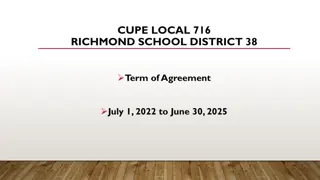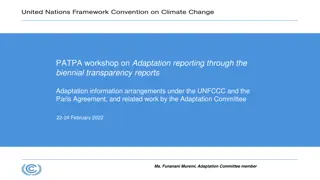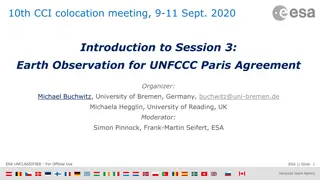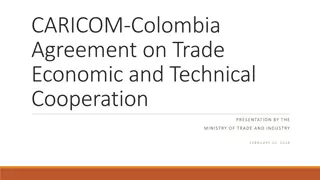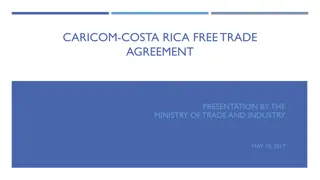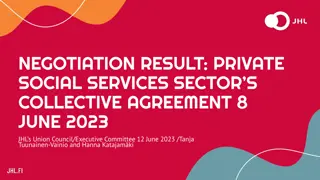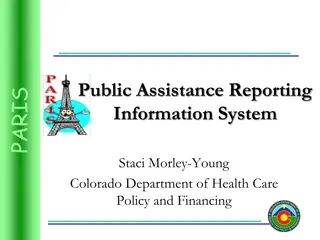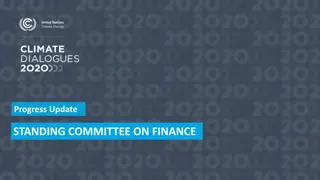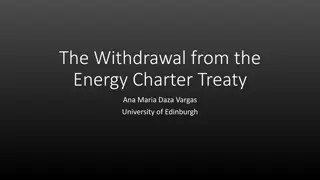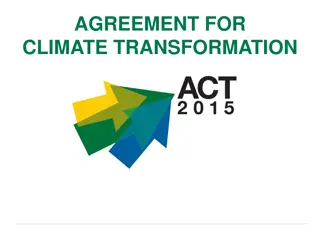New Developments and Challenges to the Paris Agreement
The impact of US withdrawal from the Paris Agreement, the Indian perspective, and the historical context of emissions. Understand the key features and implications in the global effort to combat climate change.
Download Presentation

Please find below an Image/Link to download the presentation.
The content on the website is provided AS IS for your information and personal use only. It may not be sold, licensed, or shared on other websites without obtaining consent from the author.If you encounter any issues during the download, it is possible that the publisher has removed the file from their server.
You are allowed to download the files provided on this website for personal or commercial use, subject to the condition that they are used lawfully. All files are the property of their respective owners.
The content on the website is provided AS IS for your information and personal use only. It may not be sold, licensed, or shared on other websites without obtaining consent from the author.
E N D
Presentation Transcript
New Developments and Challenges to the Paris Agreement H.H.S. Viswanathan Malaviya National Institute of Technology October 30, 2017
Outline Putting the issue in context Brief Background COP 21 and the Paris Agreement Main Features of the Paris Agreement Linkages to other issues Implications of US pull out The Indian Perspective
Putting the issue in Context Forthcoming COP 23 in Bonn US Announcement of pulling out Other Developments after the Paris Agreement
Brief Background Scientific Evidence of adverse impact of GHGs on Climate Change Rio meeting in 1992 Kyoto Protocol and the Copenhagen Talks Differences between the Developed and Developing Countries Historical Responsibilities and CBDR Problem is of stock and not flow of CO2
Historic share of emissions Cumulative emissions from fossil-fuel and cement were distributed (1870 2014): USA (26%), EU28 (23%), China (12%), and India (3%) covering 64% of the total share
COP 21 and the Paris Agreement A shift to bottom-up approach Recognition of both the problems Mitigation and Adaptation INDC The Agreement is about process and not absolute results Principle of 2 degree/1.5 degree centigrade above pre-industrial levels
Main Features of Paris Agreement Procedures (Coming into effect, Ratification, Pulling out etc) Pledges are voluntary and not legally binding For Developing countries, two successes: adaptation and Green Climate Fund
Ratification and Implementation Open for signature from 22 April 2016 to 21 April 2017 Will enter into force after at least 55 Parties to the Convention, accounting in total for at least an estimated 55 % the total global GHG emissions have ratified Will come into effect after 2020
Limiting global temperature increases Limit global temperature increase well below 2 C and urge efforts to limit the increase to 1.5 C above pre-industrial levels
Voluntary Commitments and self regulation Establish binding commitments by all parties to make intended nationally determined contributions (INDCs) and to pursue domestic measures aimed at achieving them Targets can be set low deliberately in order meet commitments Most countries INDCs do not deviate significantly from BAU paths
Voluntary commitments from countries INDCs Commit all countries to submit new INDCs every five years, with the clear expectation that they will represent a progression beyond previous one Extend the current goal of mobilizing $100 billion a year in support by 2020 through 2025, with a new, higher goal to be set for the period after 2025 with public private partnerships
Linkages to other issues Four major Conferences in 2015 and the linkages Larger question of Sustainable Life Styles Relevance of Mahatma Gandhi s ideas
Implications of the US Pull out Process of pull out (from PA and not from UNFCCC) Narrows window of mitigation gap in reduction targets Impact on Climate finance Impact on technological resources Domino effect on others? Silver lining a near universal opposition
The Indian Perspective The Indian situation development and poverty reduction Low cumulative share in emissions Low per capita emission levels
Indias INDC Highlights Premise: Per person emissions Developed country: 7-15 tonnes India:1.56 tonnes (in 2010) attributed to lifestyle (conservation of resources and moderation in resource use) India: 4-5 tonnes by 2030 Reduction in emissions intensity by 33-35% by 2030 from 2005 levels 40% Non fossil fuel energy capacity by 2030 (subject to availability of funding & technology) Develop Carbon sink of 2.5 to 3 billion tonnes (Sundarban) No absolute reduction in CO2 emission; no peaking date
Indias Strategy for Mitigation Clean and efficient energy system Solar energy Wind energy Bio mass Hydro Power Nuclear energy Planned Afforestation
Indias Strategy for Adaptation Out of eight National Missions, five are devoted to Adaptation Sectors: Agriculture, Water, Himalayan Ecosystems, Forestry, Capacity Building, Knowledge Management Question of Finance: Between 2015 and 2030, US$ 206 billion needed for Adaptation activities and US$ 834 billion needed for Mitigation initiatives
